Enzymes(酶)
Enzymes are very efficient and specific catalyst proteins which react with 1 or few types of substrates in biochemical reactions and are responsible for bringing about almost all of the chemical reactions in living organisms. Enzymes speed up reactions by providing an alternative reaction pathway of lower activation energy. Without enzymes, reactions take place at a rate far too slow for the pace of metabolism which means that they speed up the chemical reactions in living things.
There are 2 types of enzymes, ones that help join specific molecules together to form new molecules & others that help break specific molecules apart into separate molecules. Enzymes play many important roles ouside the cell as well. One of the best examples of this is the digestive system. For instance, it is enzymes in your digestive system that break food down in your digestive system break food down into small molecules that can be absorbed by the body. Some enzymes in your digestive system break down starch, some proteins and others break down fats. The enzymes used to digest our food are extra-cellular since they are located outside our cells & enzymes inside our cells are intra-cellular enzymes. Enzymes are used in ALL chemical reactions in living things; this includes respiration, photosynthesis, movement growth, getting rid of toxic chemicals in the liver and so on. Enzymes are proteins that must have the correct structure to be active. They are very easily affected by heat, pH and heavy metal ions.
Ribonucleoprotein enzyme catalytic activity is located in the protein part but for some the catalytic activity is in the RNA part. A catalyst is any substance which makes a chemical reaction go faster, without itself being changed. A catalyst can be used over and over again in a chemical reaction and does not get used up.
Enzymes lower the amount of activation energy needed by binding to the reactants of the reaction they catalyze, thus speed up the reaction and can process millions of molecules per second. Enzymes are typically large proteins with high molecular weight that permit reactions to go at conditions that the body can tolerate.
Enzyme nomenclature is based on what the enzyme reacts with & how it reacts along with the ending ase.
Enzymes must get over the activation energy hurdle.
Enzymes change how a reaction will proceed which reduces the activation energy and makes it faster. The more we increase the enzyme concentration the faster the reaction rate for non-catalyzed reactions. Enzymes that are catalyzed reactions also increase reaction rate at higher level of concentration but up to a certain point called Vmax which means that the enzyme has reached its maximum point. The reaction is limited by both the concentrations of the enzyme and substrate. Enzymes as catalysts take part in reactions which provide an alternative reaction pathway. Enzymes do not undergo permanent changes and remain unchanged at the end of the reaction. They only change the rate of reaction, not the position of the equilibrium.Enzymes as catalysts are highly selective by only catalysing specific reactions due to the shapes of the enzyme’s molecule.
Enzymes contain a globular protein part called apoenzyme and a non-protein part named cofactor or prosthetic group or metal-ion-activator. Changes in temperature and pH have great influence on the intra- and intermolecular bonds that hold the protein part in their secondary and tertiary structures.
Examples of cofactors are 1. Prosthetic group that are permanently bound to the enzyme. 2. Activator group which are cations (positively charged metal ions) & temporarily bind to the active site of the enzyme. 3.Coenzymes, usually vitamins or made from vitamins which are not permanently bound to the enzyme molecule, but combine with the enzyme-substrate complex temporarily. Enzymes require the presence cofactors before their catalytic activity can be exerted. This entire active complex is referred to as the holoenzyme.
Without enzymes, our guts would take weeks to digest our food, our muscles, nerves and bones would not work properly and so on…
Main Enzyme category groups:
Oxidoreductases:
All enzymes that catalyse oxido-reductions belong in this class. The substrate oxidized is regarded as a hydrogen or electron donor. The classification is based on 'donor:acceptor oxidoreductase'. The common name is 'dehydrogenase', wherever this is possible; as an alternative, 'acceptor reductase' can be used. 'Oxidase' is used only where O2 is an acceptor. Classification is difficult in some cases, because of the lack of specificity towards the acceptor.
Transferases:
Transferases are enzymes that transfer a group, for example, the methyl group or a glycosyl group, from one compound (generally regarded as donor) to another compound (generally regarded as acceptor). The classification is based on the scheme 'donor:acceptor grouptransferase'. The common names are normally formed as 'acceptor grouptransferase' or 'donor grouptransferase'. In many cases, the donor is a cofactor (coenzyme) that carries the group to be transferred. The aminotransferases constitute a special case.
Hydrolases:
These enzymes catalyse the hydrolysis of various bonds. Some of these enzymes pose problems because they have a very wide specificity, and it is not easy to decide if two preparations described by different authors are the same, or if they should be listed under different entries. While the systematic name always includes 'hydrolase', the common name is, in most cases, formed by the name of the substrate with the suffix -ase. It is understood that the name of the substrate with this suffix, and no other indicator, means a hydrolytic enzyme. It should be noted that peptidases have recommended names rather than common names.
Lyases:
Lyases are enzymes that cleave C-C, C-O, C-N and other bonds by means other than by hydrolysis or oxidation. They differ from other enzymes in that two (or more) substrates are involved in one reaction direction, but there is one compound fewer in the other direction. When acting on the single substrate, a molecule is eliminated and this generates either a new double bond or a new ring. The systematic name is formed according to 'substrate group-lyase'. In common names, expressions like decarboxylase, aldolase, etc. are used. 'Dehydratase' is used for those enzymes that eliminate water. In cases where the reverse reaction is the more important, or the only one to be demonstrated, 'synthase' may be used in the name.
Ligases:
Ligases are enzymes that catalyse the joining of two molecules with concomitant hydrolysis of the diphosphate bond in ATP or a similar triphosphate. 'Ligase' is often used for the common name, but, in a few cases, 'synthase' or 'carboxylase' is used. 'Synthetase' may be used in place of 'synthase' for enzymes in this class.
Products for Enzymes
- 41701(11)
- Activating Transcription Factor(3)
- Adenylate Kinase(10)
- AHCY(3)
- Aldolase(9)
- Asparaginase(5)
- Aurora Kinase(18)
- Beta Lactamase(3)
- Calcium and Integrin Binding(2)
- Calcium/Calmodulin-Dependent Protein Kinase(4)
- Carbonic Anhydrase(49)
- Casein Kinase(36)
- Cathepsin(52)
- Chitinase(5)
- Creatin Kinases(9)
- Cyclin(7)
- Cyclin-Dependent Kinase(18)
- Cyclophilin(23)
- Deaminase(14)
- Decarboxylase(12)
- Dehydrogenase(96)
- Discoidin Domain Receptor Tyrosine Kinase(2)
- DNA Polymerase(4)
- EGF Receptor(3)
- Endonuclease(6)
- Enolase(10)
- Enterokinase(5)
- Epimerase(3)
- Esterase(15)
- FGF Receptors(12)
- FK506 Binding Protein(10)
- Fructosamine 3 Kinase(2)
- Galactosidase(5)
- Glucosidase(32)
- Gluteradoxin(7)
- Glycogen synthase kinase(2)
- Glycosylase(10)
- Glyoxalase(3)
- Granzyme(7)
- Guanylate Kinase(2)
- Heparanase(2)
- Histone Deacetylase(3)
- Hydratase(10)
- Hydrolase(33)
- Hydroxylase(6)
- Isomerase(26)
- Jun N-terminal Kinase(1)
- Jun Proto-Oncogene(2)
- Kallikrein(26)
- Ligase(4)
- Lipase(14)
- Lipocalin(6)
- Lyase(9)
- LYVE1(3)
- Mitogen-Activated Protein Kinase(16)
- MMP(68)
- Mutase(11)
- Natural Enzymes(4)
- Nuclease(18)
- Nucleotidase(4)
- Nudix Type Motif(11)
- Other Enzymes(63)
- Oxidase(23)
- Oxygenase(12)
- Paraoxonase(3)
- Peptidase(41)
- Peroxiredoxin(10)
- Phosphatase(150)
- Phosphorylase(9)
- PI3-kinase(5)
- Polymerase(13)
- PPARG(2)
- Protease(15)
- Proteasome(54)
- Protein Kinase Akt1/PKB alpha(4)
- Protein Kinase-A(7)
- Protein Kinase-C(3)
- Protein Kinases(86)
- Protein Tyrosine Phosphatase(10)
- Reductase(60)
- Secreted Phospholipase A2(10)
- Serine Threonine Kinase(4)
- Sulfatase(8)
- Synthase(23)
- Synthetase(33)
- TGFBR(3)
- TGM2(3)
- TIMP(10)
- TPA(4)
- Transferase(156)
- Tyrosine Kinase(9)
- Ubiquitin Conjugating Enzyme(39)
- Uromodulin(4)
- VEGF Receptors(14)
- Transaminase(19)
- Hexokinase(6)
- TIE1(6)
- Cat.No. 产品名称 Information
-
GP21928
MMP 1 Human, HEK
Matrix Metalloproteinase-1 Human Recombinant, HEK

-
GP21932
MMP 13 Human
Matrix Metalloproteinase-13 Human Recombinant

-
GP21936
MMP 3 Human
Matrix Metalloproteinase-3 Human Recombinant

-
GP21935
MMP 3 Human, GST
Matrix Metalloproteinase-3 Human Recombinant, GST Tag

-
GP21934
MMP 3 Human, HEK
Matrix Metalloproteinase-3 Human Recombinant, HEK

-
GP21938
MMP 7 Human
Matrix Metalloproteinase-7 Human Recombinant

-
GP21937
MMP 7 Human, Active
Matrix Metalloproteinase-7 Human Recombinant, Active

-
GP21939
MMP 8 Human
Matrix Metalloproteinase-8 Human Recombinant

-
GP21940
MMP 8 Human, His
Matrix Metalloproteinase-8 Human Recombinant, His Tag

-
GP21941
MMP 9 Human
基质金属蛋白酶 9 人重组体

-
GP21946
MMP 9 Rabbit
Matrix Metalloproteinase-9 Rabbit Recombinant

-
GC73380
MMP-1-IN-1
MMP-1-IN-1(化合物6)是一种高效的MMP-1抑制剂,IC50为0.034 μM。
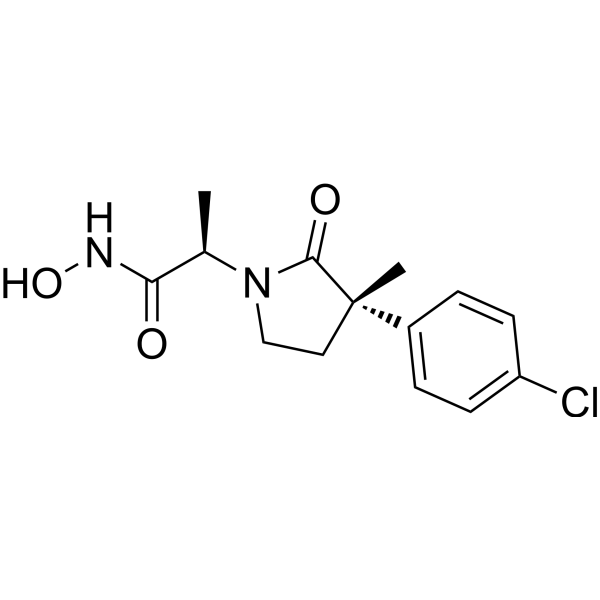
-
GP25563
MMP-2 Human, HEK
Matrix Metalloproteinase-2 Human Recombinant, HEK

-
GC69480
MMP-7-IN-1
MMP-7-IN-1 是一种有效的、选择性 MMP-7 抑制剂 (IC50=10 nM),而对 MMP-1, -2, -3, -8, -9, -13 的 IC50>11 mM。MMP-7 是癌症和纤维化等疾病的潜在靶点。
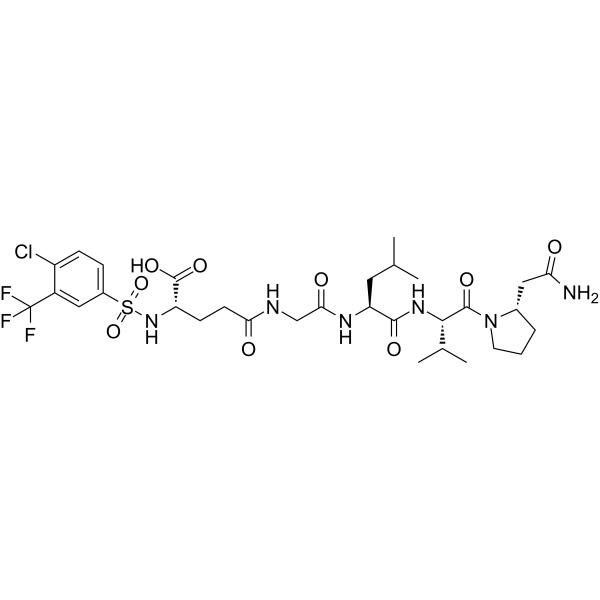
-
GC71251
MMP-7-IN-2
MMP-7-IN-2(化合物16)是MMP7的选择性抑制剂,IC50值为16nM。
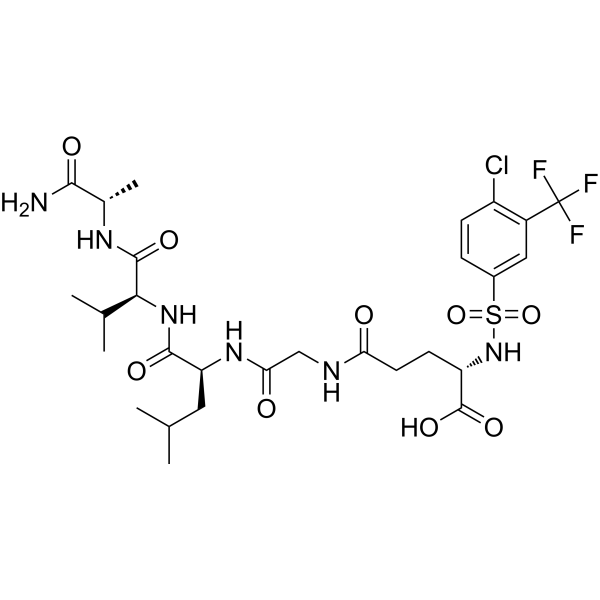
-
GC73641
MMP-7-IN-3
MMP-7-IN-3是一种有效的选择性MMP-7抑制剂。
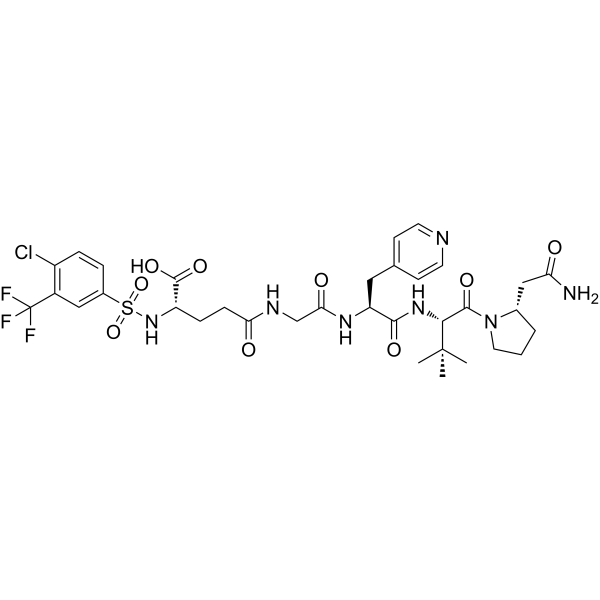
-
GC71106
MMP-9-IN-6
MMP-9-IN-6(化合物3g)是一种MMP-9抑制剂,IC50值为50 μM,具有良好的抗溃疡作用。
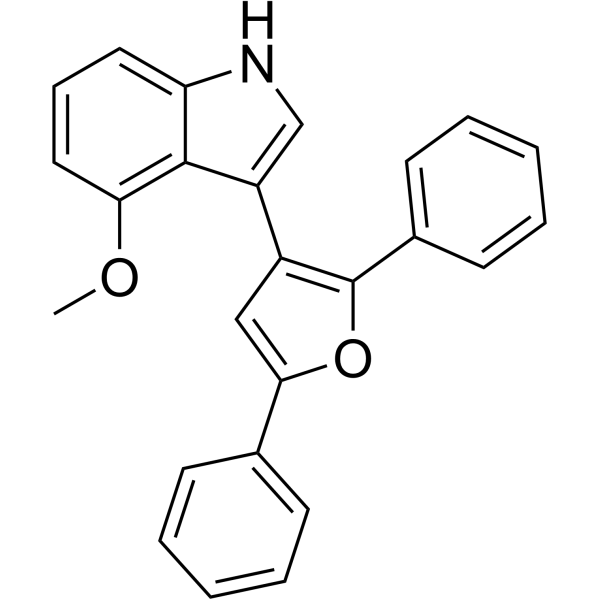
-
GC73941
MMP-9/10-IN-2
MMP-9/10-IN-2(化合物6e)是MMP10和MMP9的强效抑制剂,对MMP10的IC50为0.076μM,对MMP9的IC50为0.5μM时抑制率为93.18%。
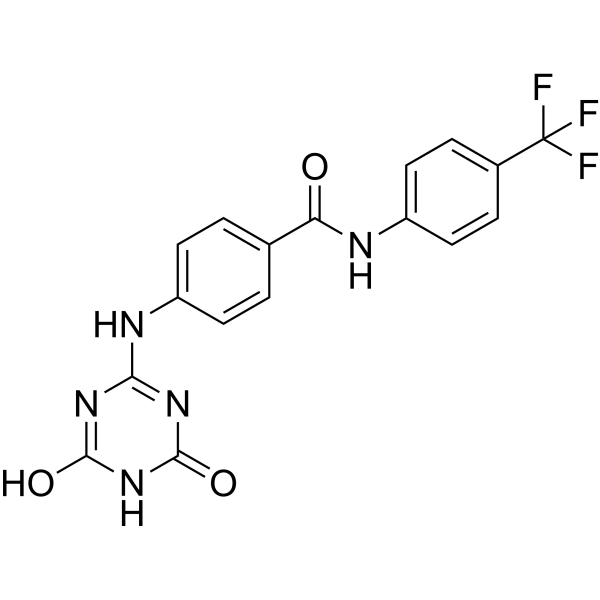
-
GP21931
MMP1 (24-207) Human
Matrix Metalloproteinase-1 (24-207 a.a) Human Recombinant, HEK

-
GP21930
MMP1 Human, sf9
Matrix Metalloproteinase-1 Human Recombinant, sf9

-
GP21947
MMP10 Human
Matrix Metallopeptidase 10 Human Recombinant

-
GC65957
MMP13-IN-2
MMP13-IN-2 是一种有效、选择性和口服活性的 MMP-13 抑制剂。MMP13-IN-2 对 MMP-13 具有优异的效价 (IC50=0.036 nM),对 MMP-1、3、7、8、9、14 和 TACE 的选择性(大于 1500 倍)。MMP13-IN-2 在体外具有阻止软骨释放胶原蛋白的能力。MMP13-IN-2 具有胶原酶相关疾病研究的潜力。
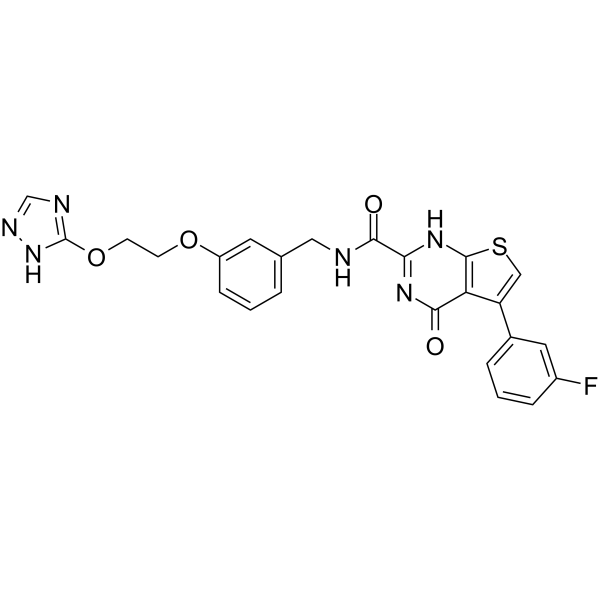
-
GC63322
MMP13-IN-3
MMP13-IN-3
An inhibitor of MMP-13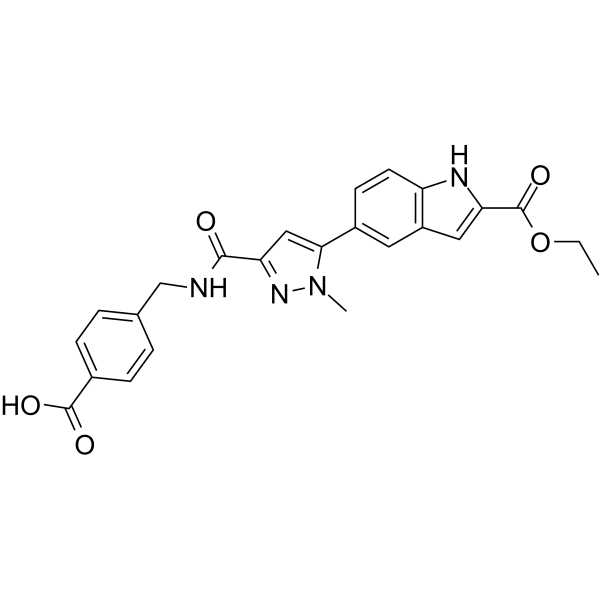
-
GP21950
MMP14 Human
Matrix Metalloproteinase-14 Human Recombinant

-
GP29001
MMP14 Human, His
MMP14 Human Recombinant produced in Sf9 Baculovirus cells is a single, non-glycosylated polypeptide chain containing 527 amino acids (21-538a

-
GP21933
MMP2 Human
基质金属蛋白酶 2 人重组体

-
GP26167
MMP2 Mouse
MMP2 Mouse produced in Sf9 Baculovirus cells is a single, glycosylated polypeptide chain containing 644 amino acids (30-662 aa) and having a molecular mass of 72

-
GC69479
MMP2-IN-1
MMP2-IN-1 是一种中度有效的 MMP2 抑制剂,IC50 为 6.8 µM。MMP2-IN-1 通过阻滞细胞周期和诱导细胞凋亡 (apoptosis),在某些癌细胞中表现出显著的抗增殖活性。
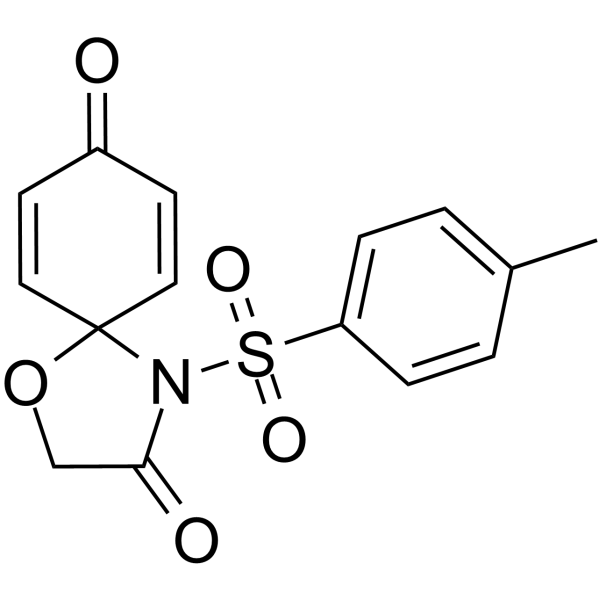
-
GP21948
MMP23B Human
Matrix Metallopeptidase 23B Human Recombinant

-
GP21949
MMP28 Human
Matrix Metalloproteinase-28 Human Recombinant

-
GP21942
MMP9 Human, HEK
Matrix Metalloproteinase-9 Human Recombinant, HEK

-
GP21943
MMP9 Human, Sf9
Matrix Metalloproteinase-9 Human Recombinant, Sf9

-
GP26168
MMP9 Mouse
MMP9 Mouse produced in Sf9 Insect cells is a single, glycosylated polypeptide chain containing 711 amino acids (20-730 a

-
GP22562
MOB1B Human
MOB Kinase Activator 1B Human Recombinant

-
GP22563
MOB3B Human
MOB Kinase Activator 3B Human Recombinant

-
GC64031
MP07-66
MP07-66, a FTY720 analogue, is devoid of immunosuppressive effects and shows promising antitumor effects in chronic lymphocytic leukemia by disruption of the SET-PP2A complex leading to PP2A reactivation.
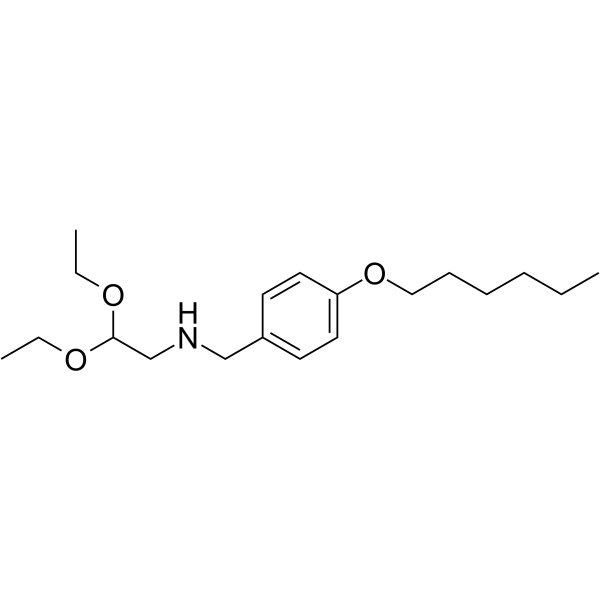
-
GP21951
MPG Human
N-Methylpurine-DNA Glycosylase Human Recombinant

-
GP21952
MPI Human
Mannose Phosphate Isomerase Human Recombinant

-
GP21953
MPO Human
Myeloperoxidase Human

-
GP21954
MPST Human
Mercaptopyruvate Sulfurtransferase Human Recombinant

-
GP21955
MSRA E.Coli
Methionine Sulfoxide Reductase A E.Coli Recombinant

-
GP21956
MSRA Human
Methionine Sulfoxide Reductase A Human Recombinant

-
GP21957
MSRB E.Coli
Methionine Sulfoxide Reductase B E.Coli Recombinant

-
GP21958
MSRB2 Human
Methionine Sulfoxide Reductase B2 Human Recombinant

-
GP21959
MSRB3 Human
Methionine Sulfoxide Reductase B3 Human Recombinant

-
GP21960
MTHFD2 Human
MTHFD2 Human Recombinant

-
GP21961
MTHFS Human
5,10-Methenyltetrahydrofolate Synthetase Human Recombinant

-
GP21962
MUG E.Coli
G/U Mismatch-Specific DNA Glycosylase E.Coli Recombinant

-
GP21963
MUTM E.Coli
Formamidopyrimidine-DNA Glycosylase E.Coli Recombinant

-
GP21964
MutY E.Coli
Adenine DNA Glycosylase E.Coli Recombinant





